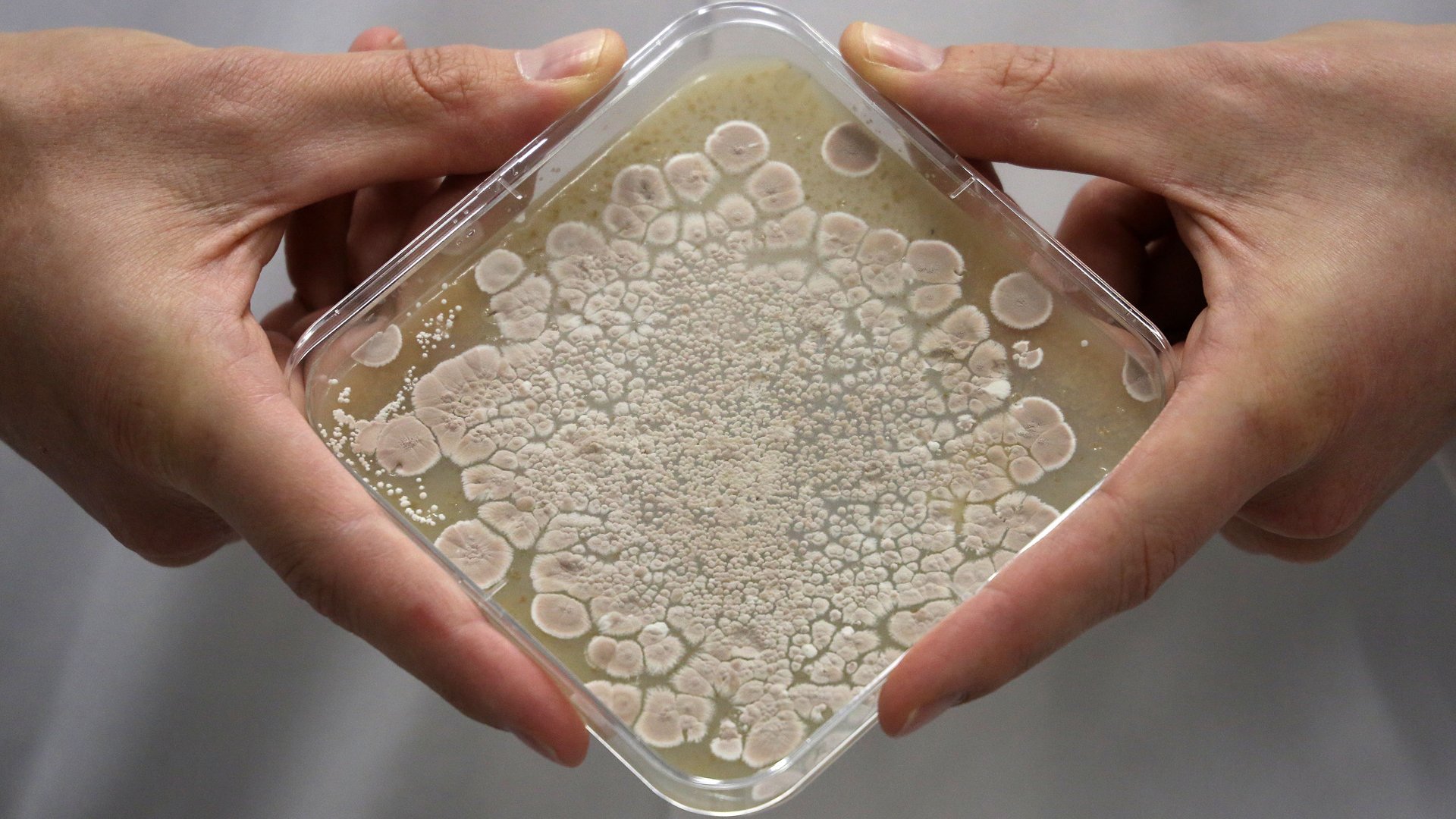Streptomycetes are filamentous soil bacteria belonging to the genus Streptomyces. There are more than 500 known species, all of which play an important part in the decomposition of dead plants.
Streptomycetes are filamentous soil bacteria belonging to the genus Streptomyces. There are more than 500 known species, all of which play an important part in the decomposition of dead plants.
Antibiotics
Approximately 60% of all our antibiotics come from streptomycetes. They produce these substances to eliminate their competitors. Streptomycetes will sometimes attack competing bacteria with as many as five different types of antibiotics at the same time. Some of these inhibit bacterial growth, for example, while others disrupt cell wall formation or protein synthesis.
Earthy forest scent
In addition to antibiotics, streptomycetes also produce that wonderful earthy forest scent that follows a shower of rain. To survive in their dry soil environment, they produce drought-resistant spores. The coats of these spores contain geosmin, which carries that familiar earthy forest scent. The impact of raindrops hitting the ground throws these miniscule, ultralight spores into the air, where we can breathe them in.
The route to water
Camels (Camelus bactrianus) can smell water at distances of more than 75km. What they actually smell is the geosmin in the spores of streptomycetes. After being carried over long distances by the desert winds, these spores are detected by the camel’s highly sensitive nose. This is how camels always know where to find water in a desert.

